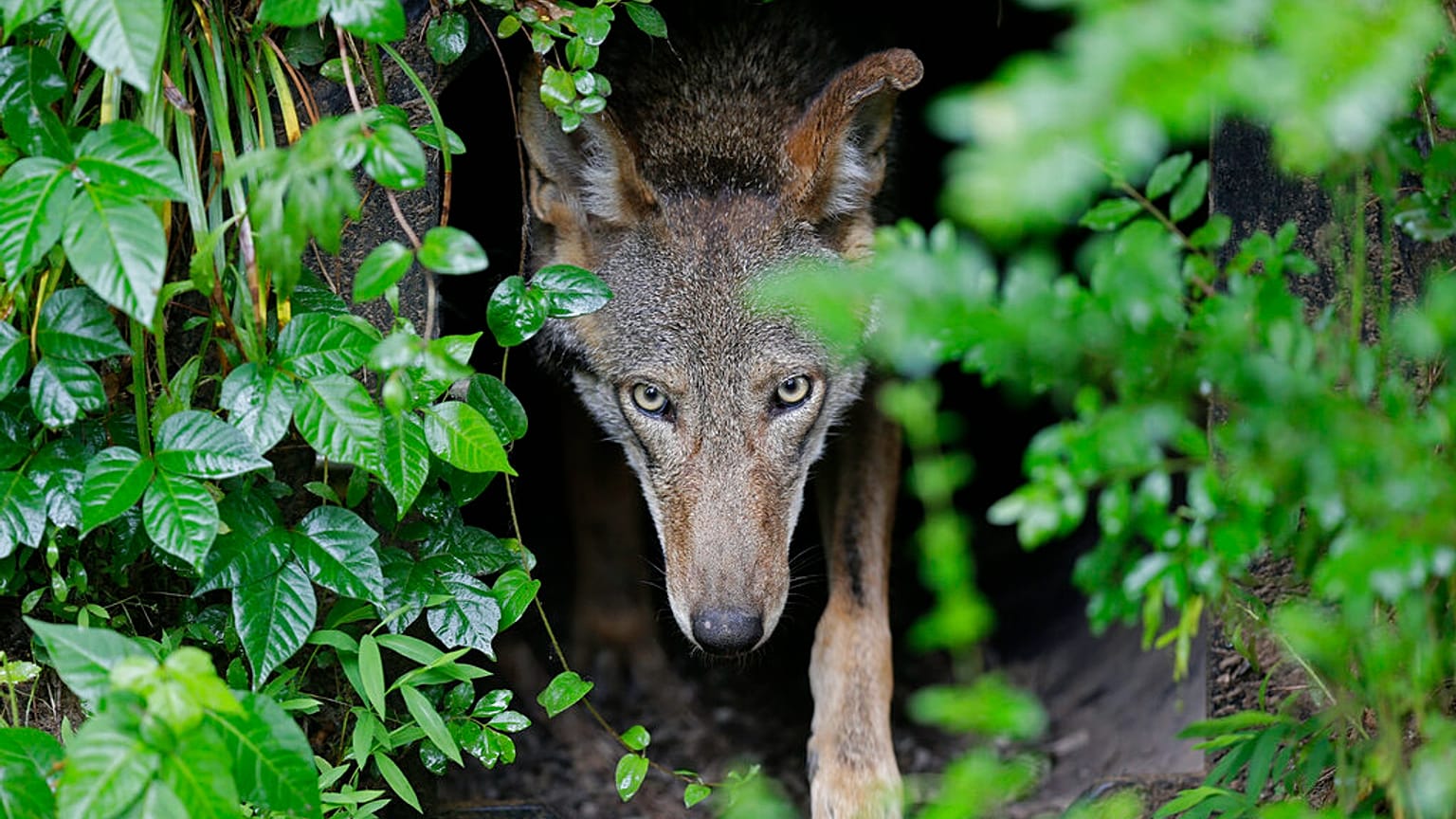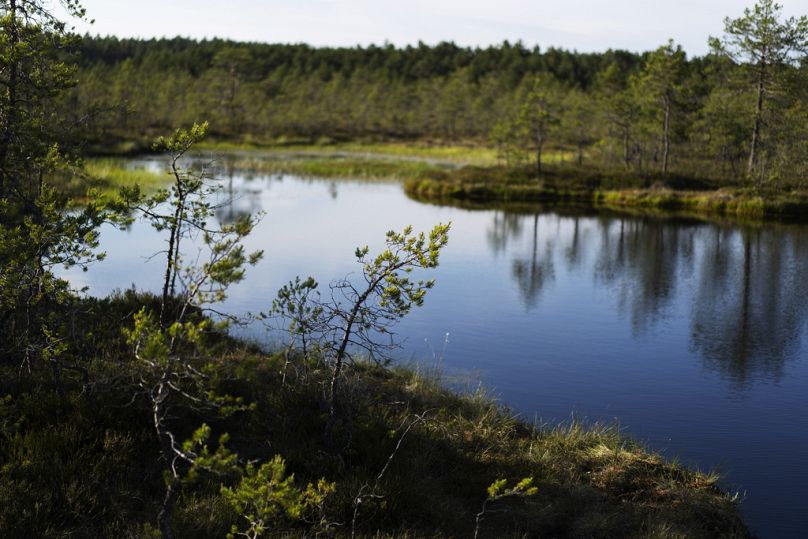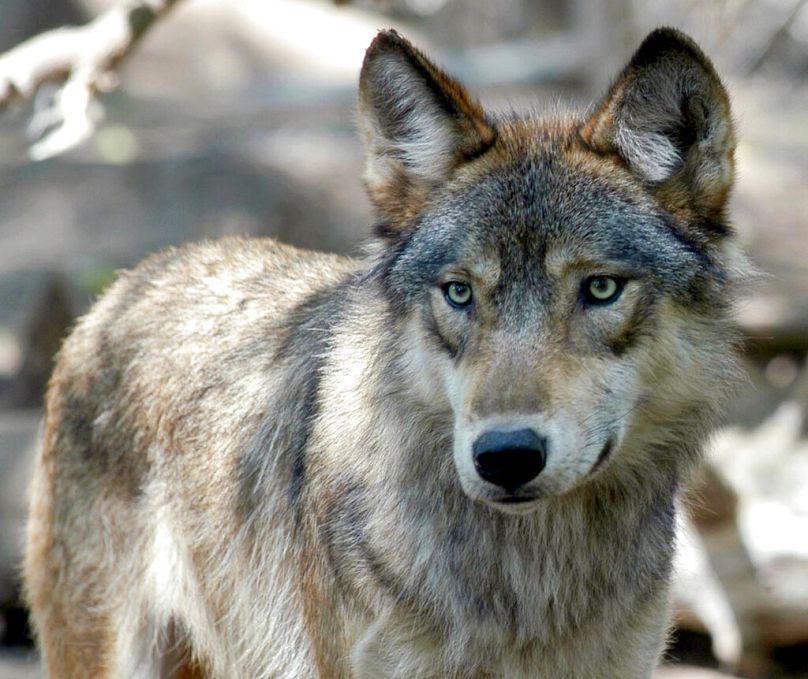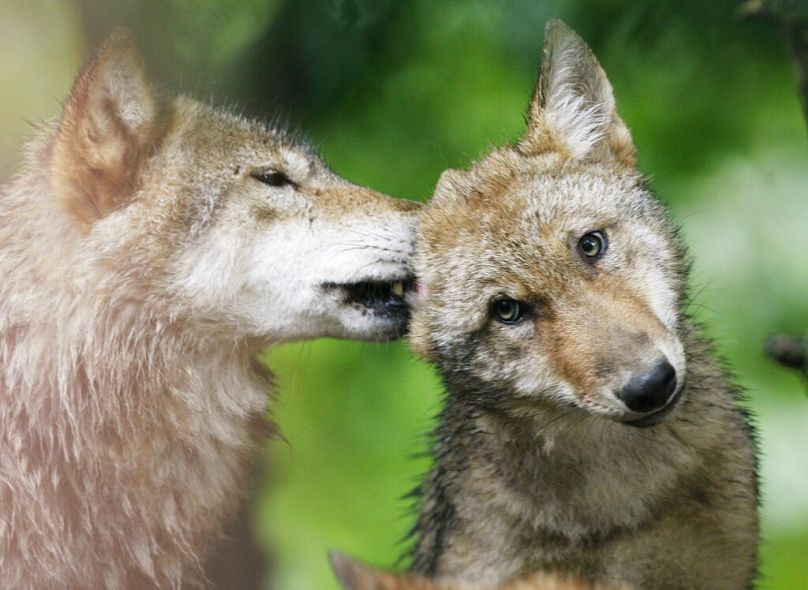Concerns have been raised that the science behind the cull is shaky, and that killing wolves may drive them to harmful behaviours against humans.
Estonia has, once again, begun culling its wolf population.
A specified number of wolves are killed in the Baltic country every year, though this time around conservationists are worried.
Estonia’s Environmental Agency has set the cull quota at 144, claiming there are more wolves in the country than conservation plans permit.
However, Maris Hindrikson, wolf researcher at the University of Tartu, tells Euronews she and fellow scientists are “not convinced” about their data.
She claims the wolf population is being calculated based on “old fashioned” and “unsystematic” techniques - such as hunter observations - that may not accurately reflect the number of wolves inside Estonia.
This means that the cull quota could be far too high, potentially "disrupting the whole population."
“The problem is we simply don't know how many wolves there are,” Hindrikson says, estimating the cull could wipe out more than 30 per cent of the country's entire wolf population.
Authorities claim culls are needed
In a statement sent to Euronews, the Estonian Environmental Agency said its “methodology was in use in Nordic countries like Sweden, Finland and Norway."
“We find the current methodology to be comprehensive, objective and appropriate,” they added.
Even though wolf numbers have recovered in recent years, their total number is considered “stable/decreasing” by the International Wolf Centre. Estimates put their total population at between 150 - 300 in Estonia.
Authorities claim culls are needed as wolves attack livestock, especially sheep, hitting the country’s farmers economically.
A total of 946 sheep were killed by predatory wolves in 2022, according to Estonia’s Environmental Board (Keskonnaamet).
That figure has exceeded 1,100 this year, with several weeks of 2023 still to go, it says.
One particularly grisly attack at a farm in southeastern Tartu County killed an entire breeding flock of more than a dozen ewes in October, with farmer Rein Mirka telling Estonian Public Broadcasting (ERR) the incident had cost him between €15,000 to €20,000.
'Sheep are like fast food for wolves'
Hindrikson still questions whether culling is the best approach to the problem.
“Science has always shown that culling actually does not help reduce sheep deaths,” she tells Euronews.
As habitats are lost - limiting the food resources on offer - Hindrikson claims lethal solutions may be counterproductive, driving wolves to hunt livestock in the first place.
“Culling is actually a big problem because it destroys packs. Wolves are very social animals and we know that larger packs hunt larger animals, like moose. But usually, smaller packs go for smaller prey because they can't develop the cooperative methods to hunt,” she explains.
Another problem, the researcher says, is that when older wolves are culled younger ones do not experience and learn more complicated hunting strategies, meaning they resort to eating livestock. Hindrikson likens it to “fast food” for wolves.
Studies suggest lethal solutions are less effective at protecting livestock compared to other measures, though the relationship is influenced by several factors, such as the ecological context and local management practices.
“I am not totally against the cull. It can make sense to eliminate some problem animals that only go after sheep,” says Hindrikson.
"What I am against is culling that takes out so many. We really don't know how many wolves we have and what effect culls actually have. They seem to create a pattern where we kill so many wolves they affect how packs are structured, they go after the sheep, then sheep attacks rise. So then people say yes, sheep are in danger. Please kill more wolves.
“It's an ongoing cycle,” she adds.
Can farmers prevent wolves from attacking their sheep?
Better alternatives Hindrikson proposes are “ensuring adequate numbers of natural prey in the wild”, such as roedeer and wild boar, and taking steps to deter wolves.
“Farmers should build more fences and get guard dogs to scare off wolves. This is something that has worked all over Europe. We get news of a sheep attack, but often farmers haven't prevented a thing. We always blame the wolves, it is easy, but actually, people do everything.
“Prevention and making society understand where this problem comes from and how to mitigate it are very important,” she continues.
A range of techniques, including electric fences and sound alarms, can be deployed to reduce wolf attacks.
Hindrikson also points the finger at alleged flaws within government policies to tackle the problem, particularly compensation schemes for damages caused by large predators.
“Of course, we try to prevent sheep attacks. But the problem we have in Estonia is that there's no correlation between preventive measures and compensation."
She explains that even if you don't build fences, get dogs to guard your sheep or take other preventative measures, you can still get compensated.
“That's a big problem.”
The Estonian Environmental Ministry has been approached for comment.
Living among wolves in Estonia
Public opinion in Estonia is not willing to tolerate more than a few dozen packs, and it tends to become “the number one enemy of wolves whenever their numbers grow too much,” Marko Kübarsepp, chief specialist of the game monitoring working group of the Environment Agency, told ERR in October.
Culling ultimately taps into ancient prejudices towards wolves in Estonia, claims Hindrikson.
“We have this kind of societal limit, people are scared of wolves. Whoever you are, whether a farmer or hunter, you can feel a kind of fight for the resources from wolves because there are predators, like us.
“Wolves don't live in faraway woods. They live among us. We actually don't know how to coexist with them. It's difficult.”
In a statement sent to Euronews, the Estonian Environmental Ministry said: "In Estonia, we have protection and management plan for the large carnivores (bear, wolf and lynx) that is compiled in collaboration with different interest groups. Also, [the] Estonian court has processed this matter and found that [the] method for monitoring is sufficient and trustful."
It said their specialist had "been monitoring wolves for 25 years and whose work is mainly in the field tracking and estimating the number of wolves using tracking cameras, collecting data (counting tracks, locating packs), catching wolves and equipping them with acoustic transmitters to learn their behaviour and understand the size of the territories, etc."
"And yes, we are using the data sent by the hunters, but not only," the ministry added.





















